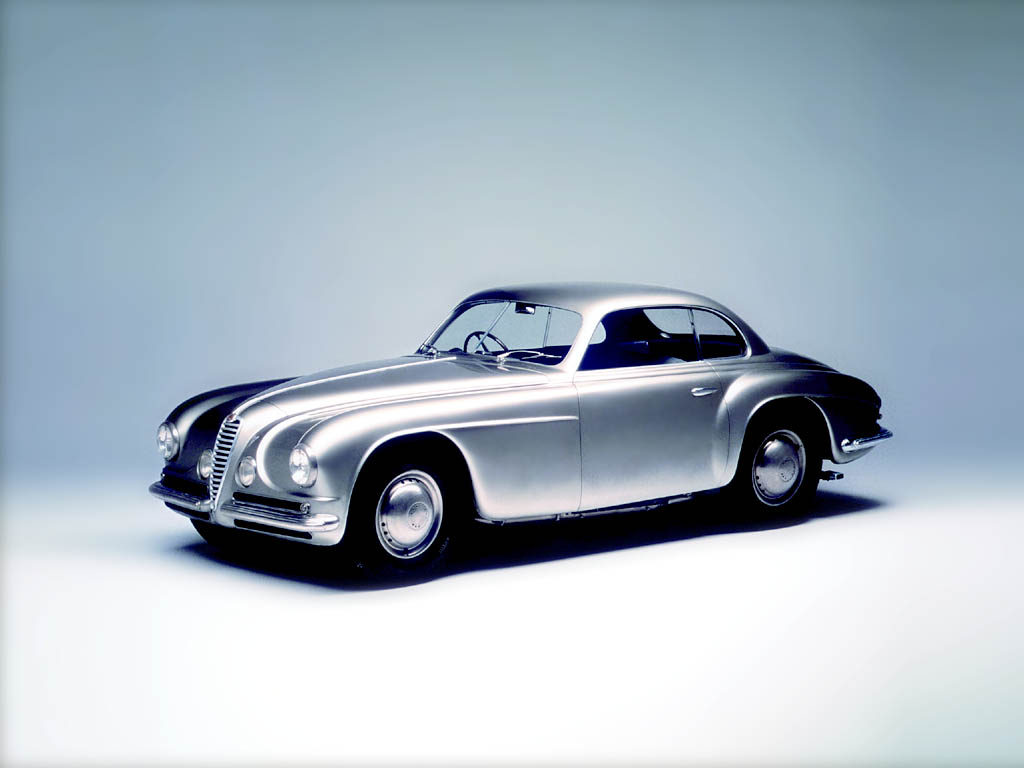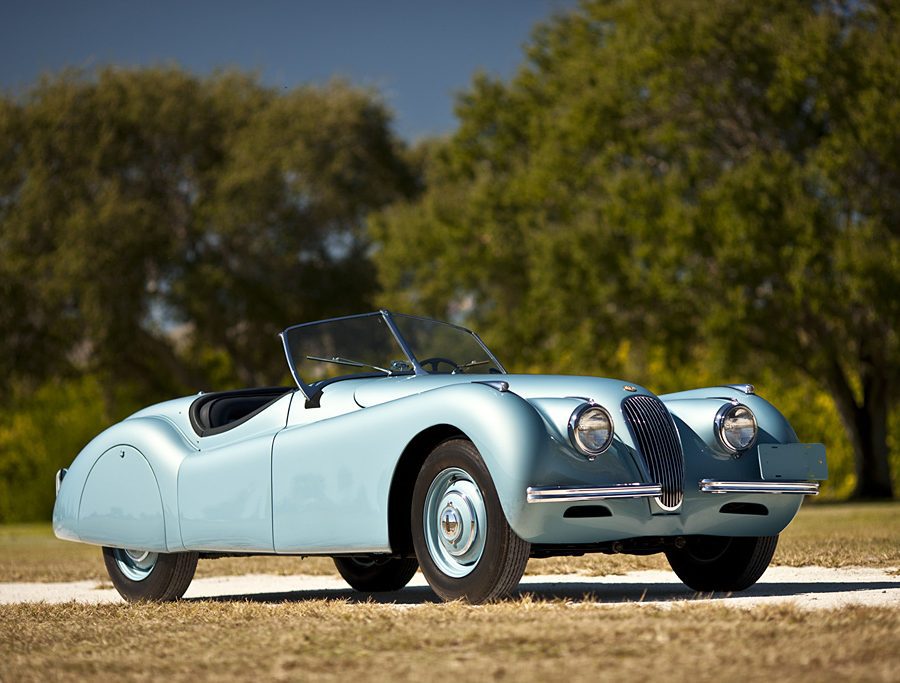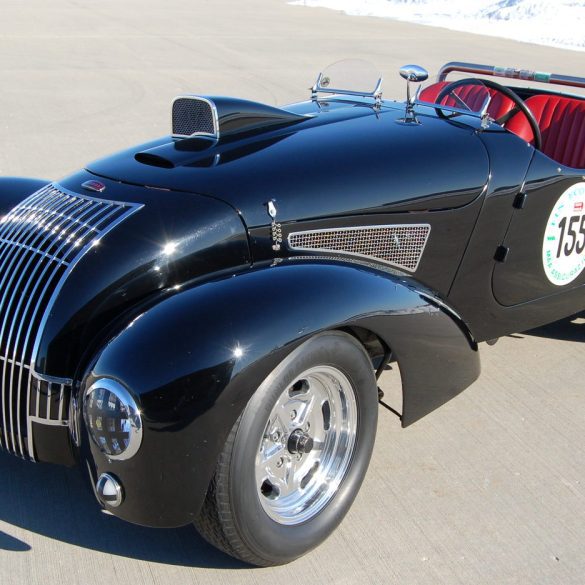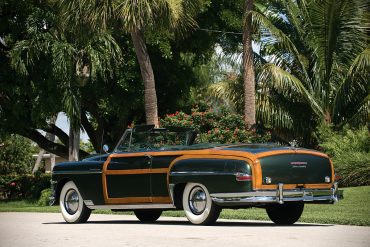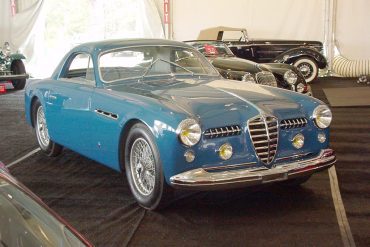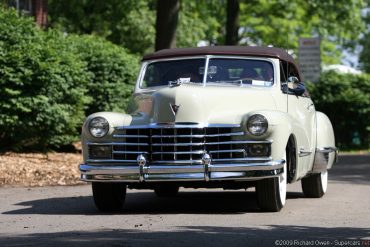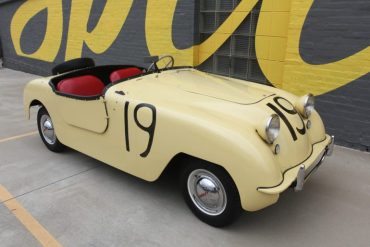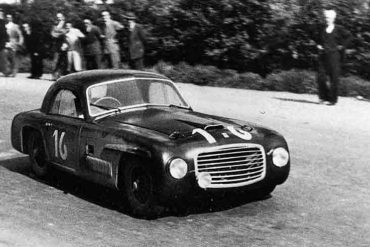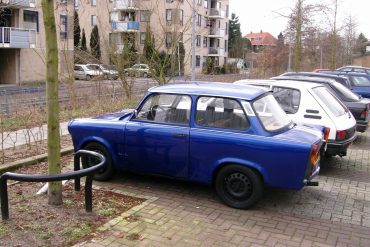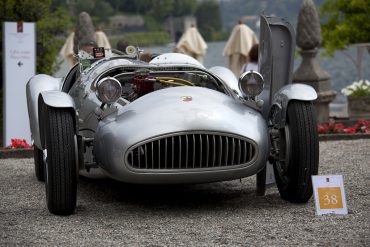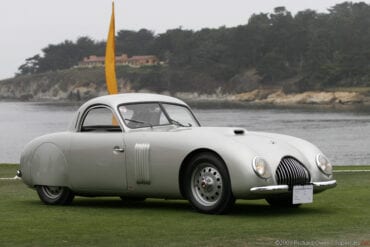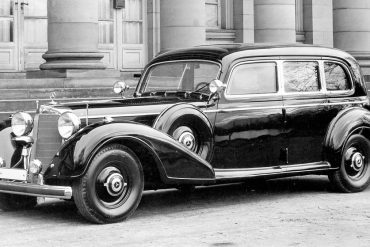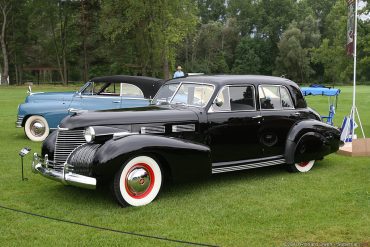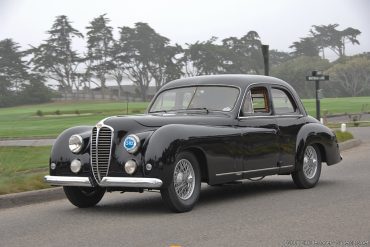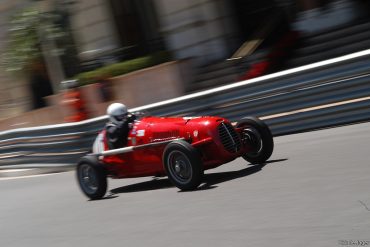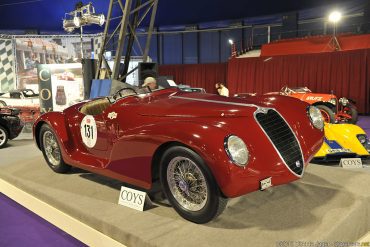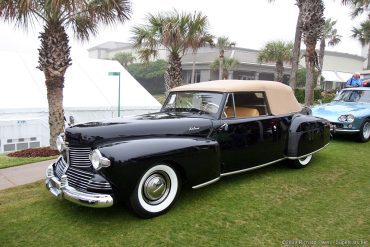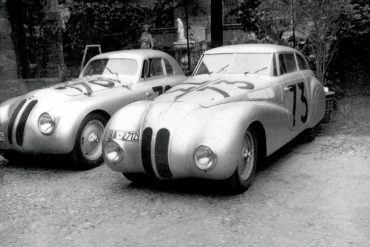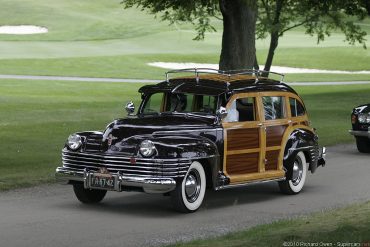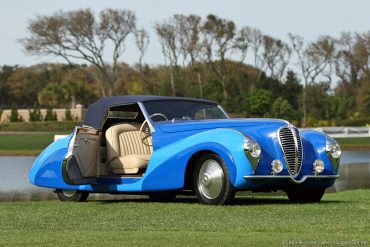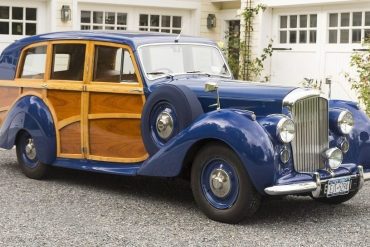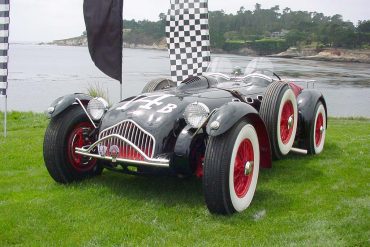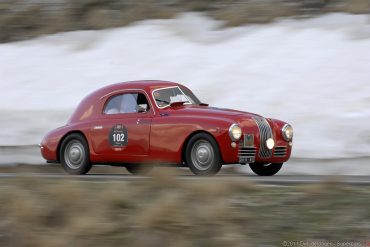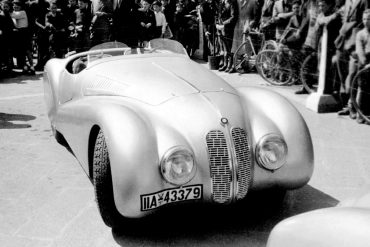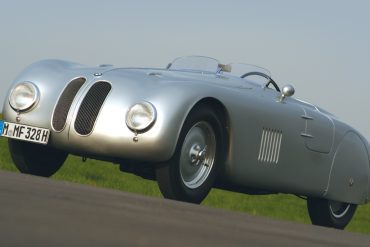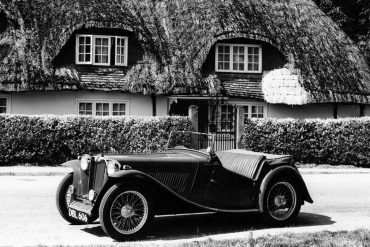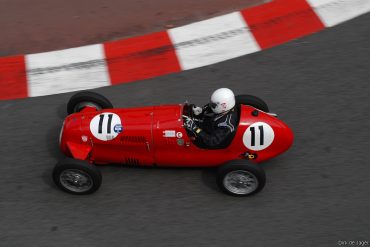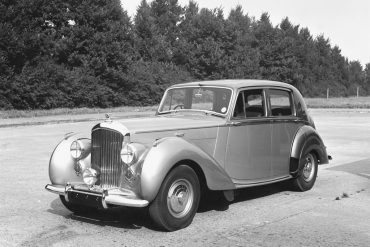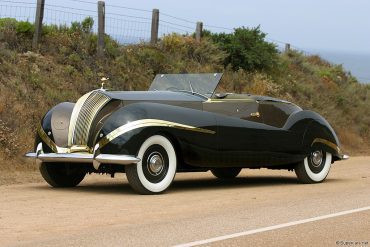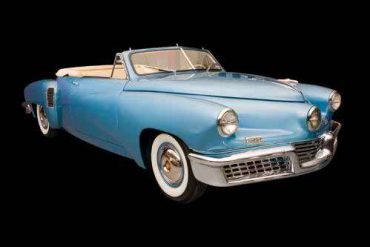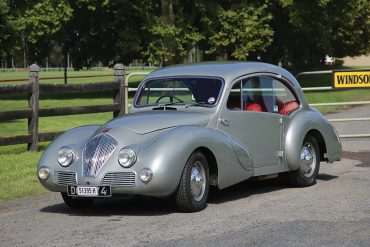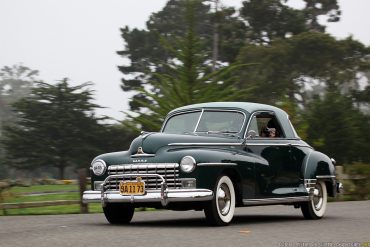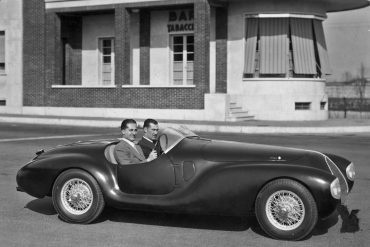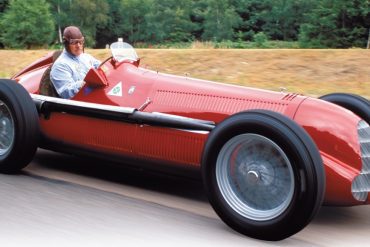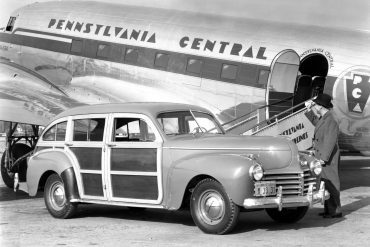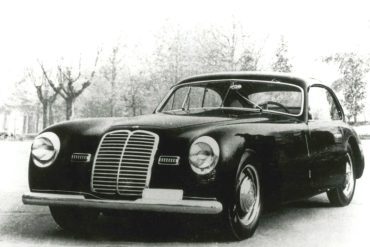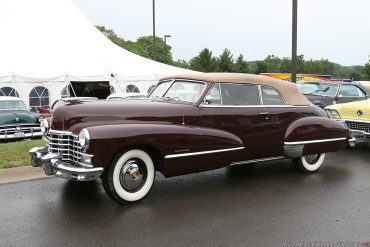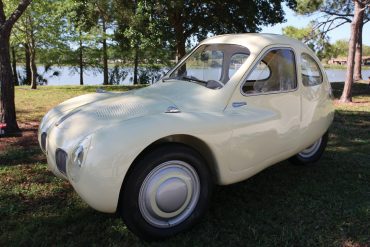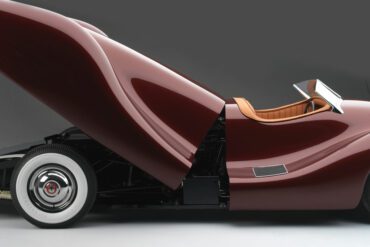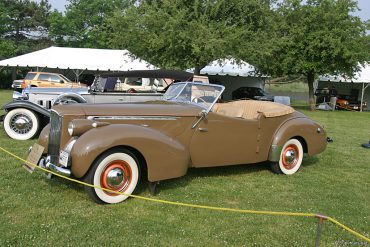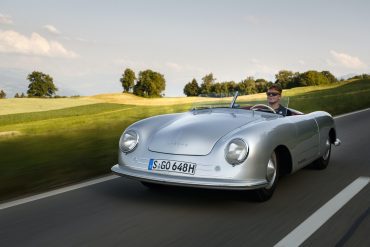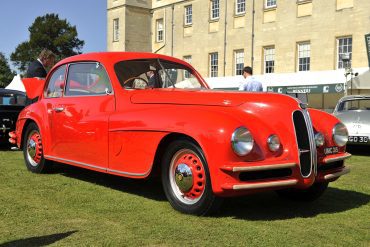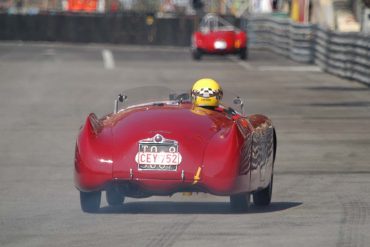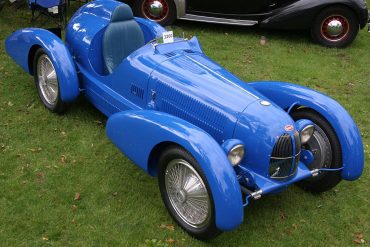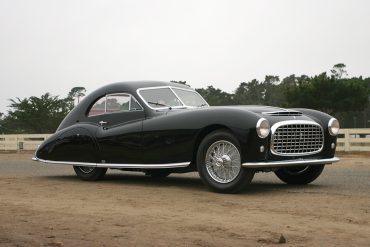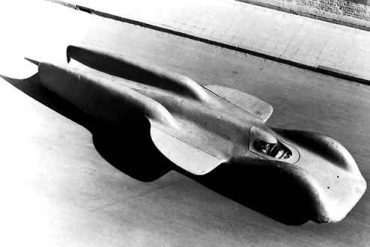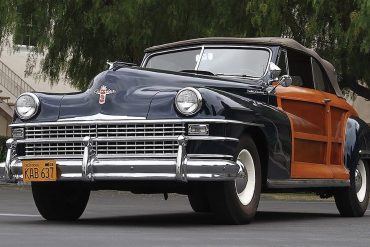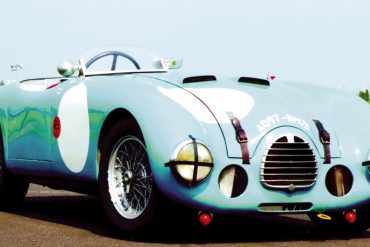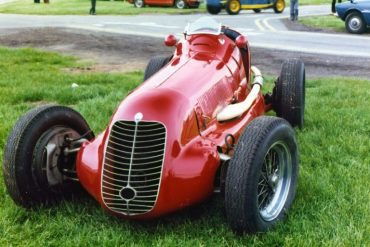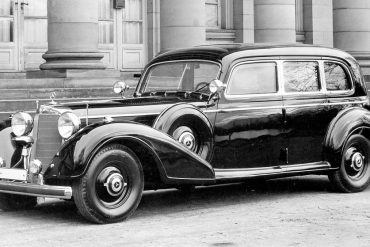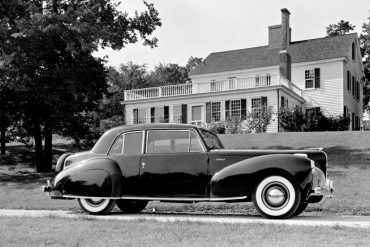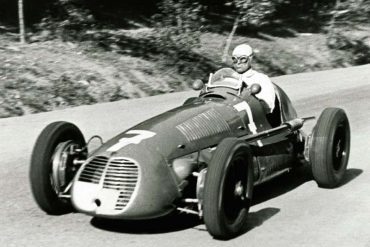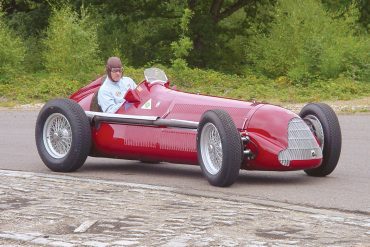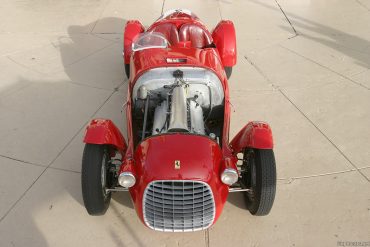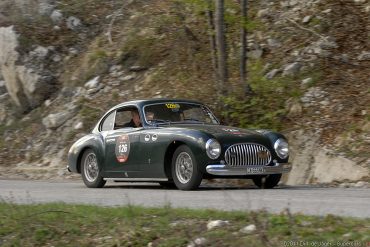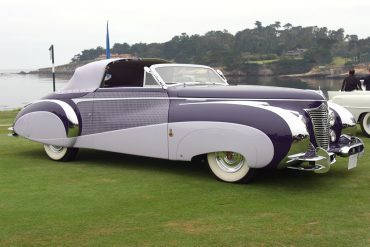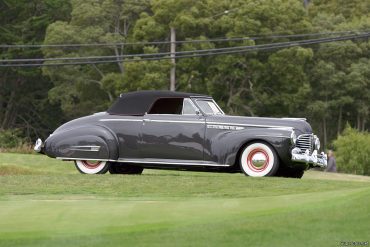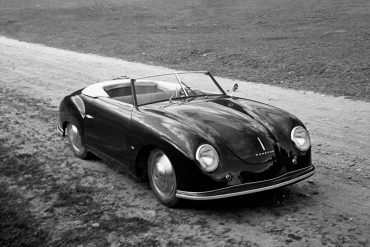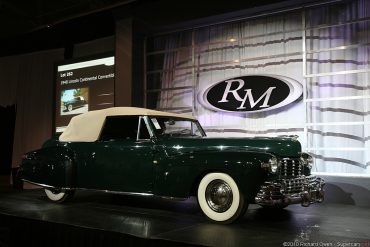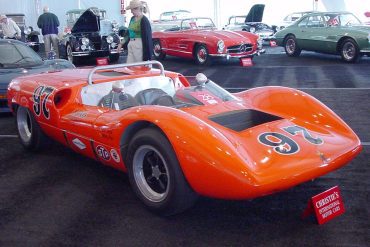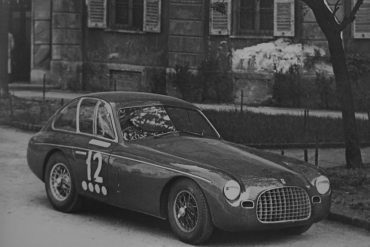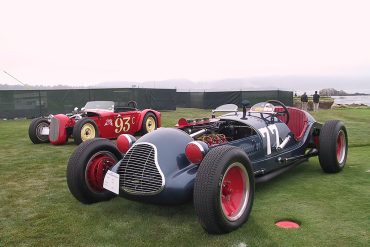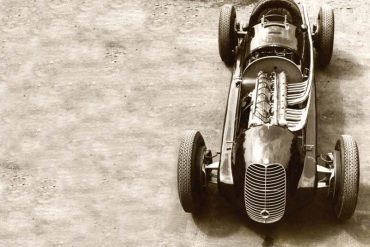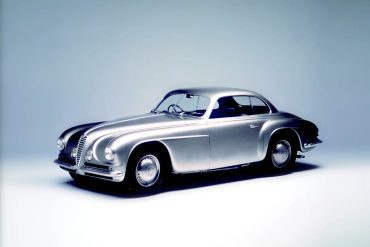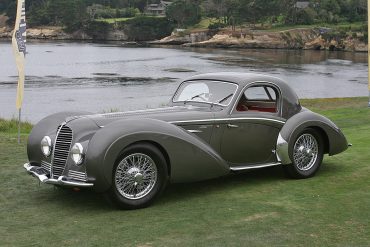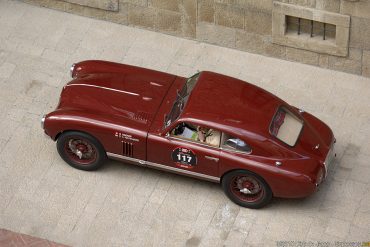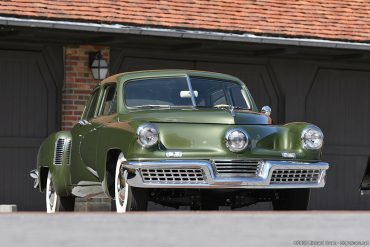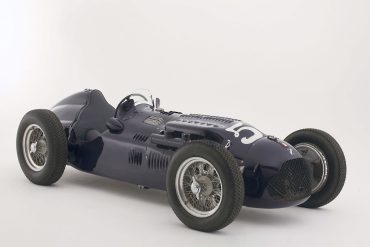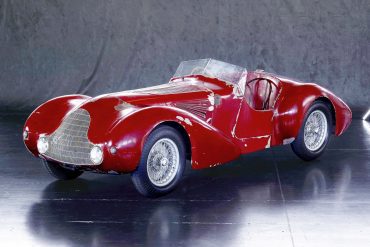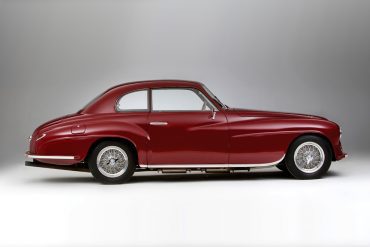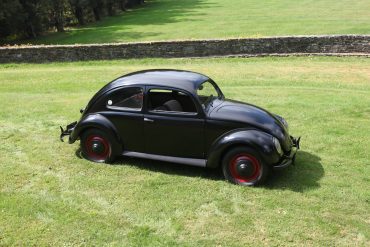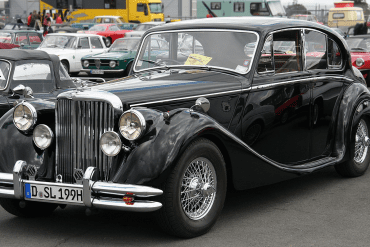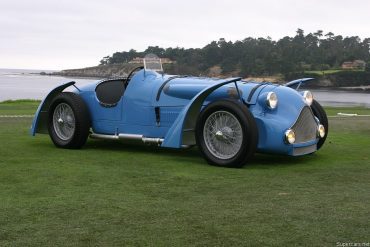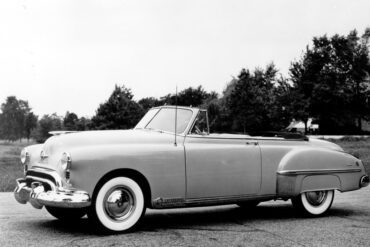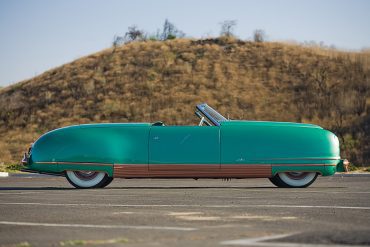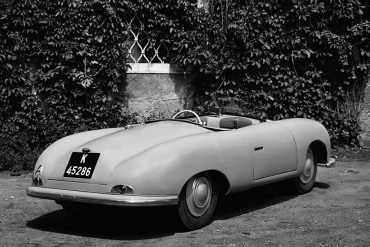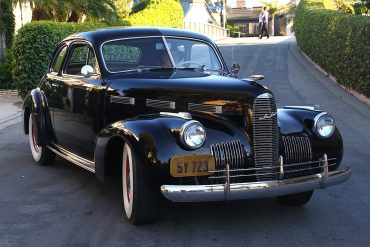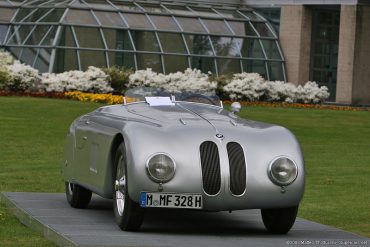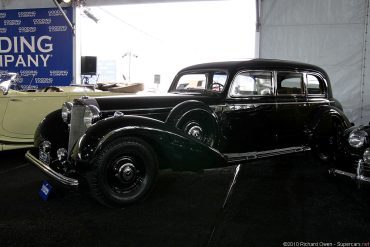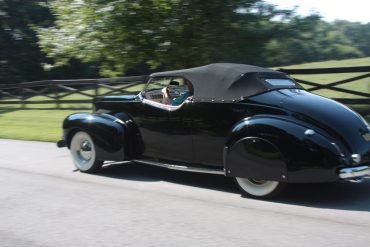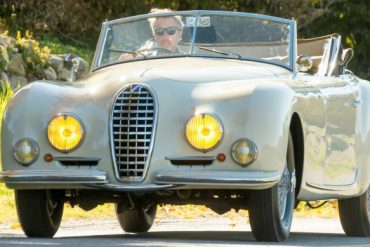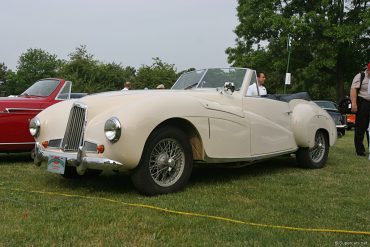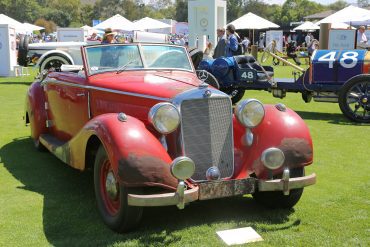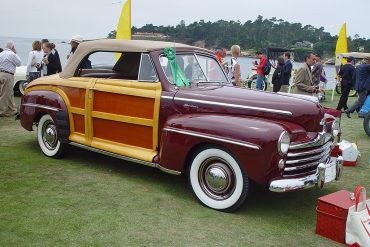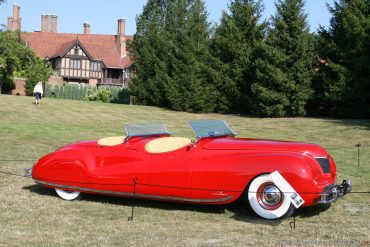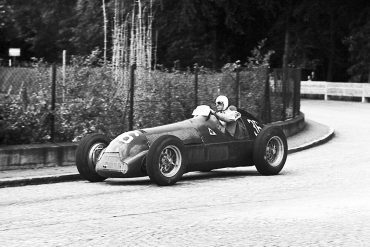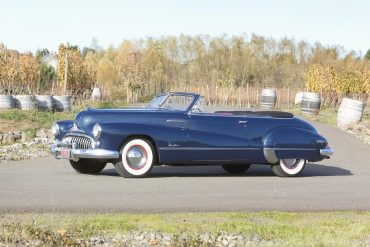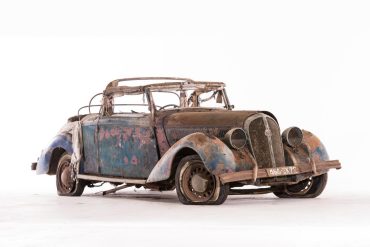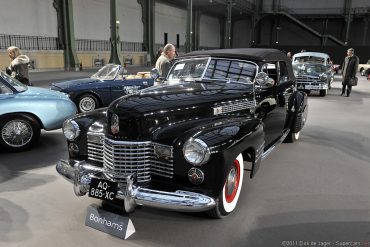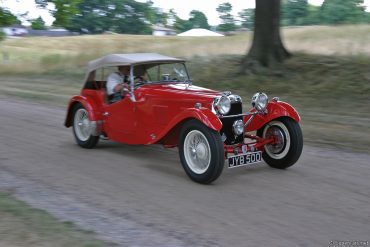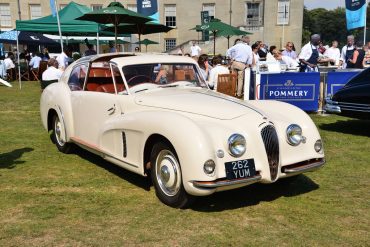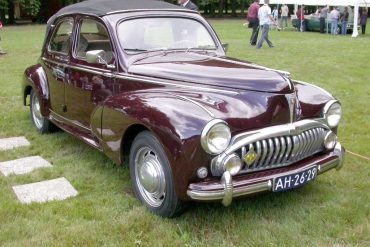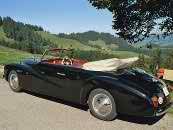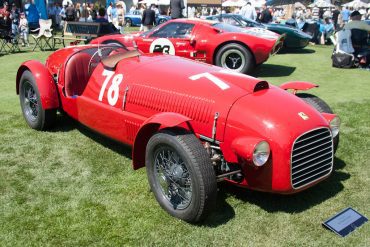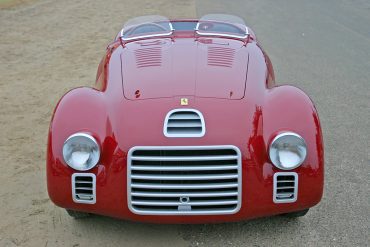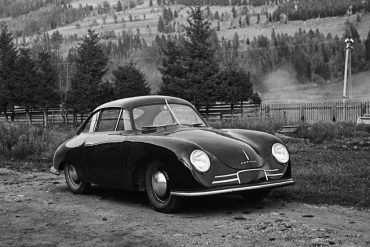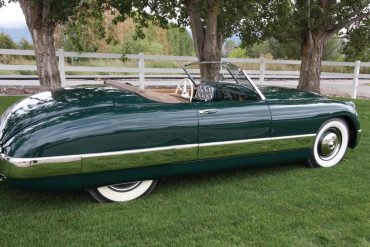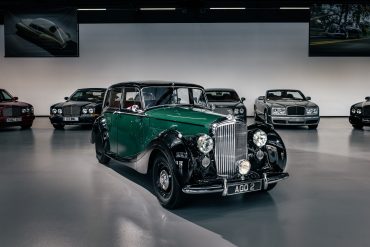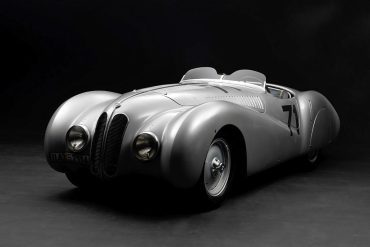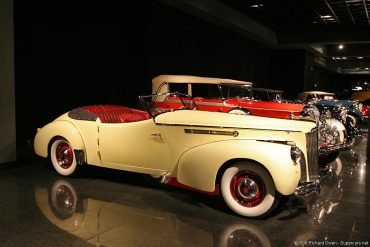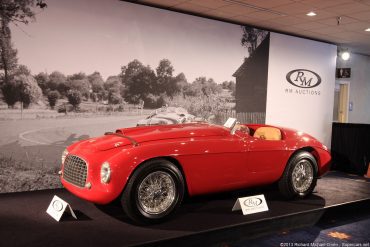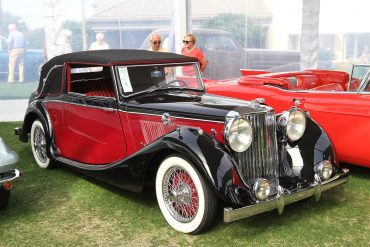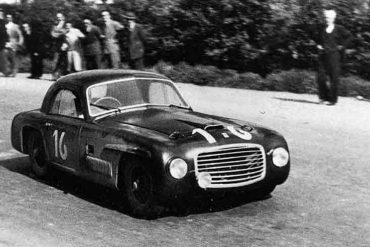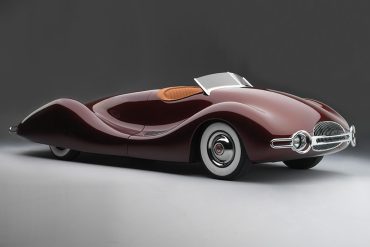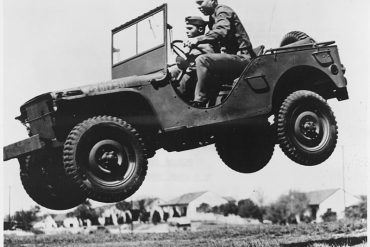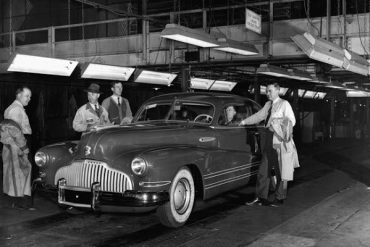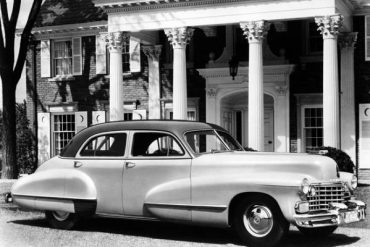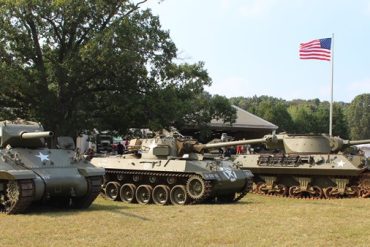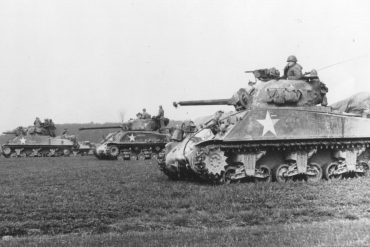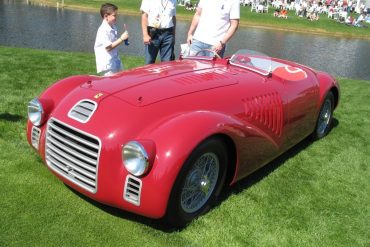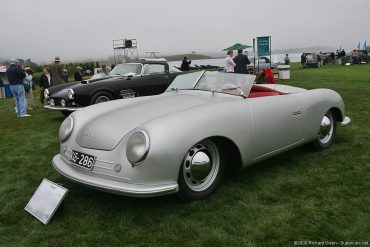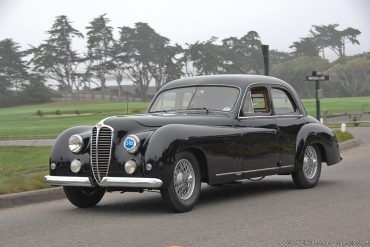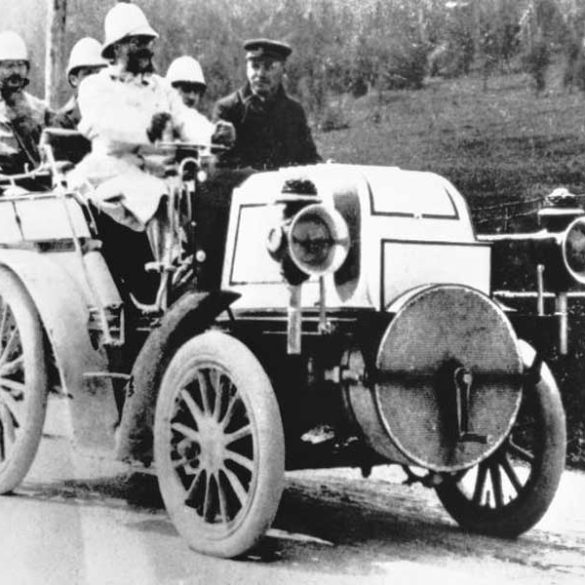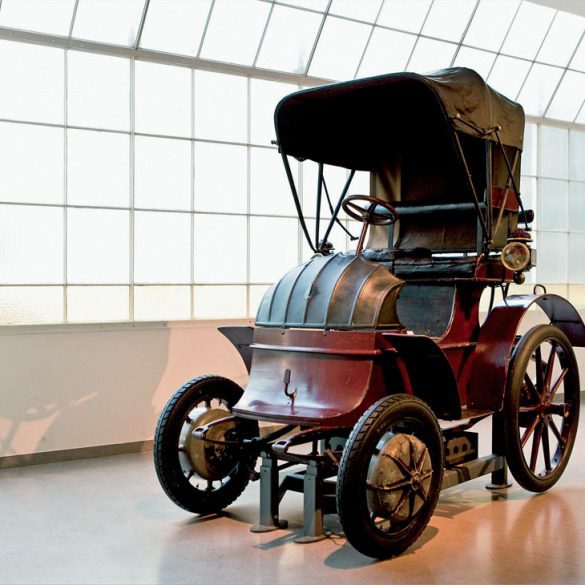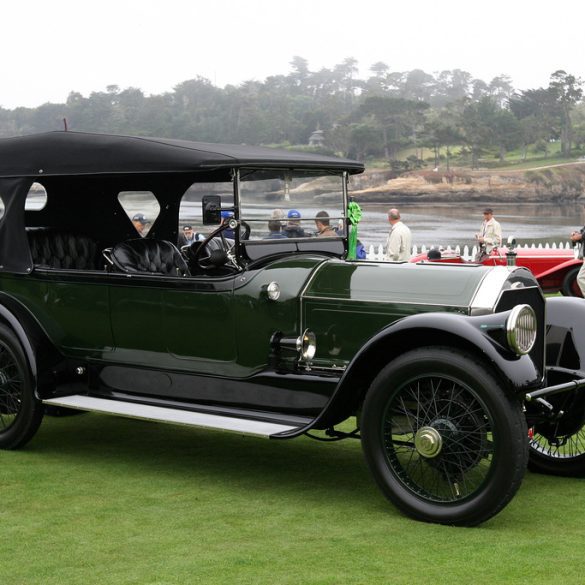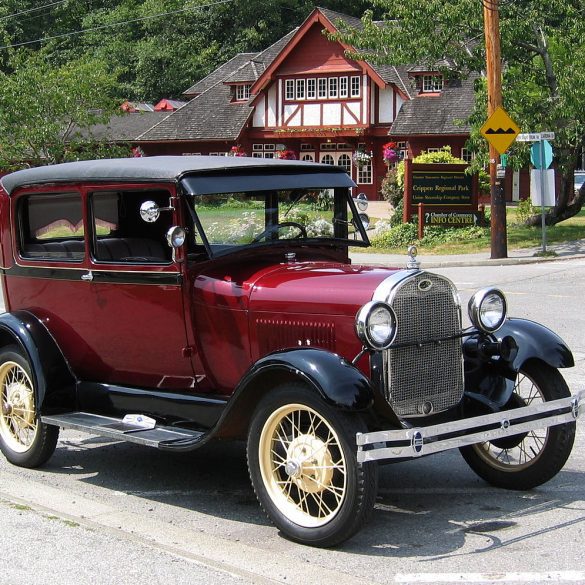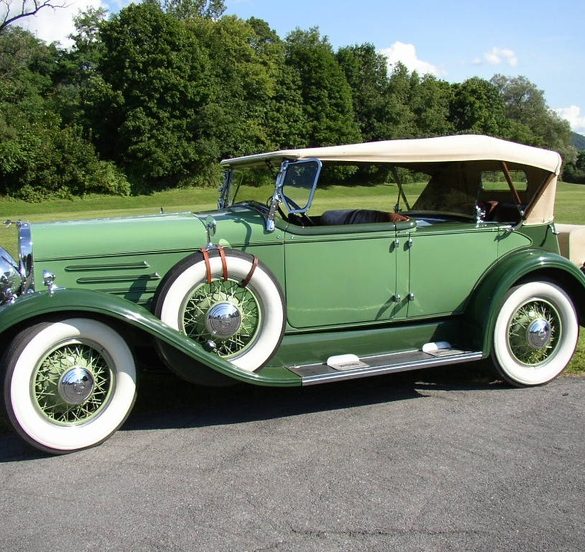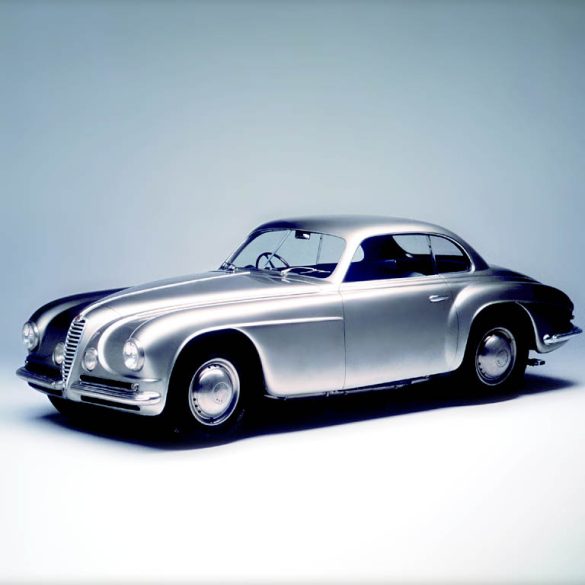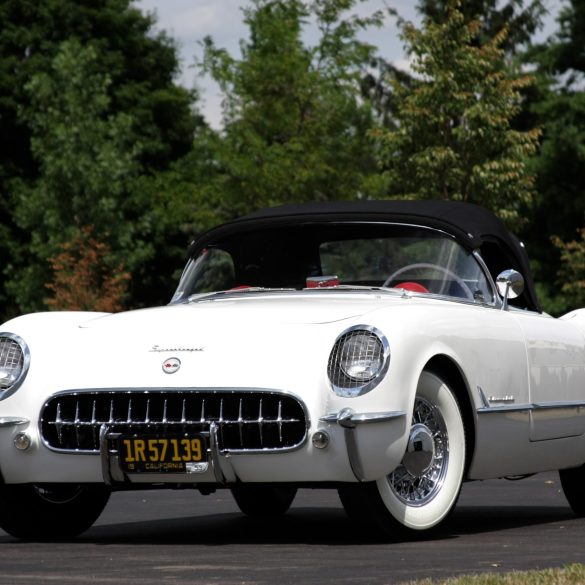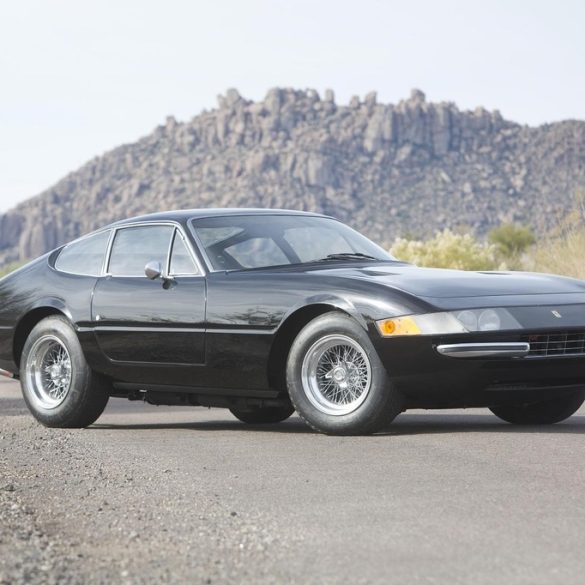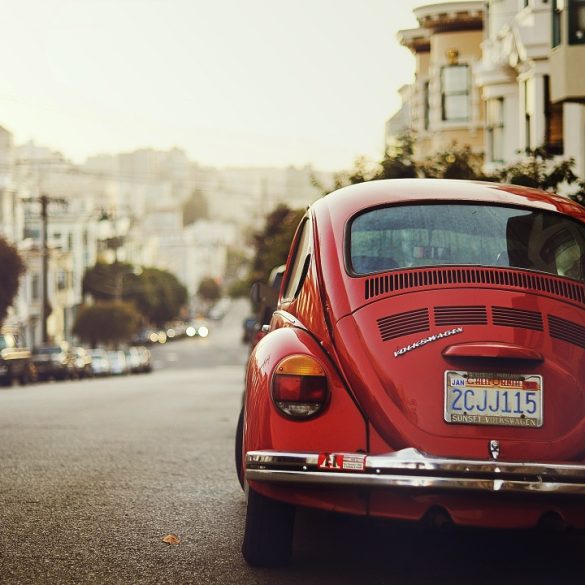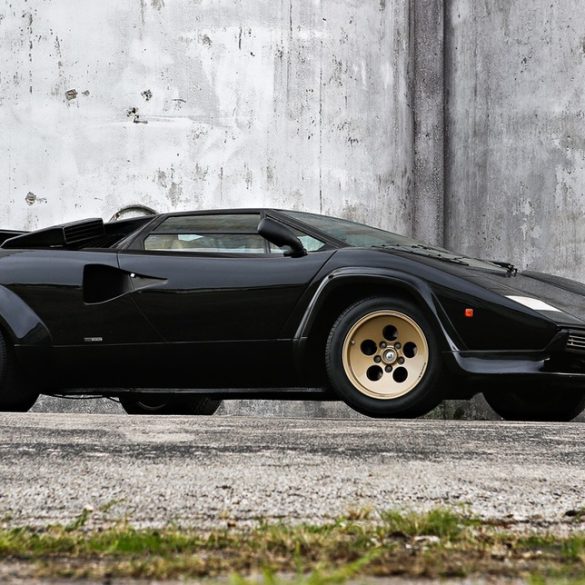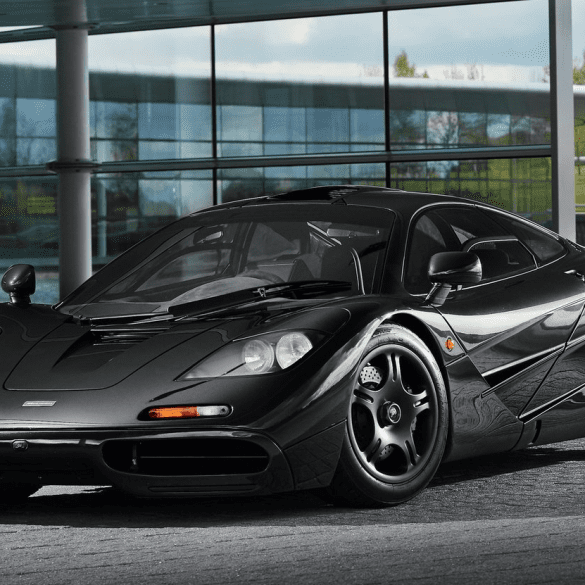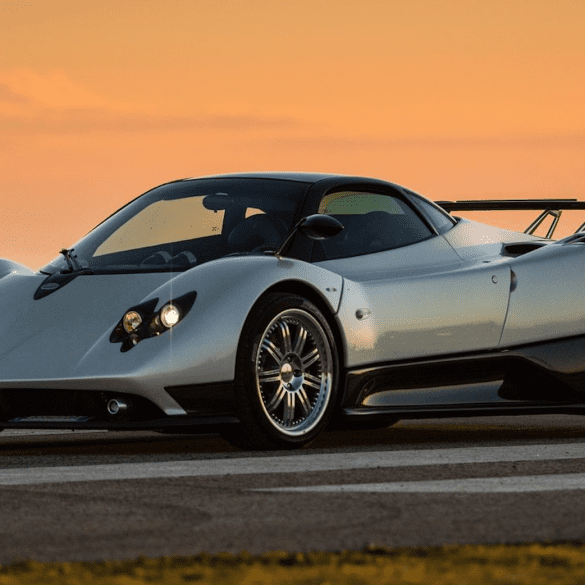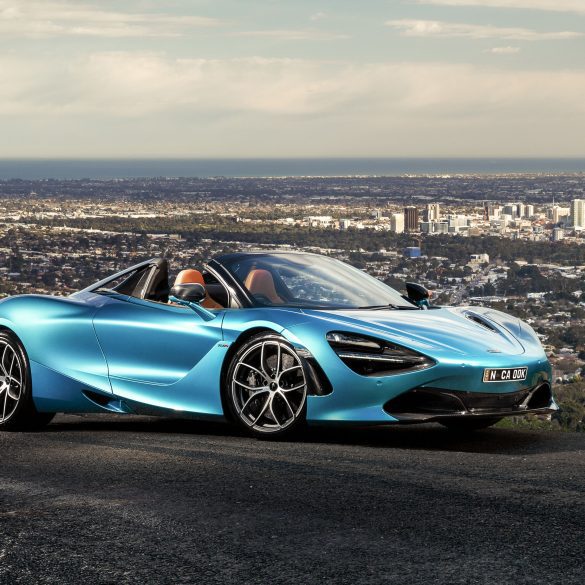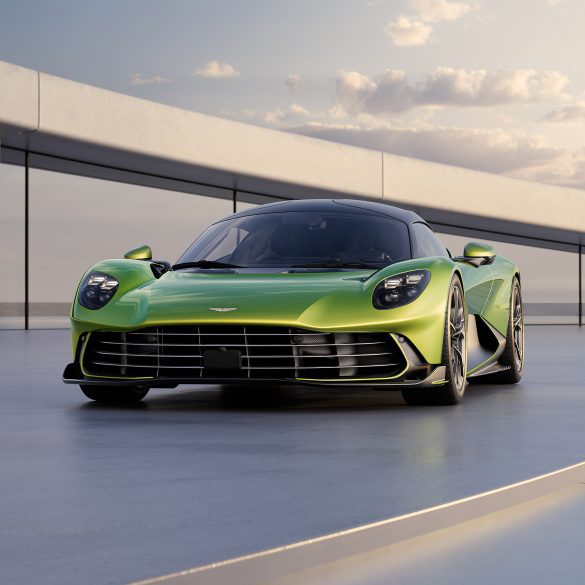1940s Cars – The Darkness Of WWII, The Auto Industry & Cautious Optimism
The 1940s were an interesting time for the high end car market and for the broader automotive industry in general. The biggest driver of the rapid changes in the industry were the side effects of WWII. Early in the 1940s, carmakers were forced to build tanks and airplanes for the war effort. Early in 1941 it also became clear that production of passenger cars would need to be cut to save materials for defense purposes. As far as cars were concerned, WWII shut down the industry. When cars were produced, shortages in materials like aluminum and zinc meant that materials like cast iron and steel were used instead so cars were heavy and cumbersome.
Cars got bigger and were more luxurious. With Aluminum low in availability, carmakers when back to steel for pistons and other components. The increased weight resulted in heavier crankshafts and connecting ends and that worked its way down the rest of the car. After the war things picked up for the auto-industry. While many countries were still picking up the pieces and rebuilding, the auto industry made huge strides forward in terms of volume, technology, design and overall innovation. The back half of the 1940s had cars created from odd parts left from the war as well as ground up machines that took advantage of the newfound consumer optimism and were made by re-energized carmakers.
Automobile Model List (1940 - 1949)
The 1940s saw automobile production largely shift to military vehicles due to World War II, but advancements in technology continued behind the scenes. After the war, these advancements, including developments in automatic transmissions and more powerful engines, fueled a surge in car production and a shift towards larger, more comfortable vehicles.
The History Of 1940s Cars And How The War Impeded Their Development
Pre War 1940s Cars
US car production was dealt a setback because of World War II. In 1940 pre World War II the US produced 4,680,000 cars. Although each decade in history is different the decade of the 1940’s is by far the most unusual in U.S. automobile history. This was the only period of time when automobile production stopped for a period of 3-4 years. No cars were manufactured after 1942 due to the advent of World War II. Production for civilians did not resume until 1946 . Early 1940’s saw the first time luxury cars started rolling off a production line. A car showed the wealth and status of its owner. Cars like the Delahaye 135 convertible whose top speeds reached 95 mph, the Delahaye was the ultimate 1940 luxury car.
The department of war came up with a one-quarter ton four wheel drive military vehicle called the Jeep. WWII saw the conversion of many U.S. automotive plants to military production. Chrysler meanwhile introduced a safety rim wheel that kept the tire on the rim in case of a blowout. Chrysler also offered two-speed electric windshield wipers. The new 1940s cars had a lower, longer, broader, and more massive look. Hudson offered a combination automatic clutch with a semi-automatic transmission. The driver could select either the manual or semi-automatic shift with buttons on the dash.
In 1941 the Chrysler Company started production of the luxury oriented Town & Country wagon. These cars of the 1940s was the forerunner to the modern-day mini van. The Town & Country Wagon like the Mini Van featured an optional 9 passenger seating, a rear hatch,and was the first to include genuine wood exterior panels. The Town & Country Wagon was the original “woody”. This car made a huge splash with the public especially during the postwar era. The popular convertible version hit the highways in 1949 with a starting price of $3,970.
Sealed-beam headlights became standard equipment on De Soto as well as all other Chrysler Corporation 1940s cars. Also new to De Soto was the optional All-Weather Air Control system with dual blower and heater units. The 1941 Dodge Luxury Liner Custom as pioneered earlier by Chrysler, was made available to a lower priced car for the first time in the 1941 Dodge. Power was transferred from the engine to the transmission by fluids with no metal connection. Also introduced on Dodge were safety rim wheels.
The ’40s also saw the rise of the glamorous 1942 Lincoln Continental. The vehicle’s development was overseen by Edsel Ford, son of Ford’s founder Henry Ford. After World War II, Lincoln maintained its top status with 1940s vehicles like the Mark II and the ’60s-era Continentals, which gained fame through their “suicide-style” rear doors and use as U.S. presidential limousines.
In the 1930s, Edsel Ford, Henry Ford’s son, saw an opportunity to create an additional brand within the Ford hierarchy, one that would be an intermediary — between the everyman Ford Deluxes and premium Lincoln Zephyrs. To achieve this, Edsel felt the vehicles of this new brand should offer distinctive styling along with innovative features and better capabilities. He named the new division “Mercury”. Unfortunately, production stopped during World War II;
The Ford Motor Company produced a number of 1940s cars like the v-8 deluxe coupe that went for the price of about $650 . The Ford V8 deluxe four door Sedan which went for around $750 , included and were fitted with sealed beam head lights on the deluxe models, and had chrome headlight trim rings, and parking lights. Before the US entered the war the automobile capital was St Louis MO. Later Detroit MI became the leader in the automotive industry and remains so in the present time. Sealed-beam headlights became standard equipment on De Soto as well as all other Chrysler Corporation 1940s cars. Also new to De Soto was the optional All-Weather Air Control system with dual blower and heater units. The 1941 Dodge Luxury Liner Custom as pioneered earlier by Chrysler, was made available to a lower priced car for the first time in the 1941 Dodge. Power was transferred from the engine to the transmission by fluids with no metal connection. Also introduced on Dodge were safety rim wheels.
The ’40s also saw the rise of the glamorous 1942 Lincoln Continental. The vehicle’s development was overseen by Edsel Ford, son of Ford’s founder Henry Ford. After World War II, Lincoln maintained its top status with 1940s vehicles like the Mark II and the ’60s-era Continentals, which gained fame through their “suicide-style” rear doors and use as U.S. presidential limousines.
In the 1930s, Edsel Ford, Henry Ford’s son, saw an opportunity to create an additional brand within the Ford hierarchy, one that would be an intermediary — between the everyman Ford Deluxes and premium Lincoln Zephyrs. To achieve this, Edsel felt the vehicles of this new brand should offer distinctive styling along with innovative features and better capabilities. He named the new division “Mercury”. Unfortunately, production stopped during World War II;
The Ford Motor Company produced a number of 1940s cars like the v-8 deluxe coupe that went for the price of about $650 . The Ford V8 deluxe four door Sedan which went for around $750 , included and were fitted with sealed beam head lights on the deluxe models, and had chrome headlight trim rings, and parking lights. Before the US entered the war the automobile capital was St Louis MO. Later Detroit MI became the leader in the automotive industry and remains so in the present time.
During The War
All auto companies halted production of civilian passenger cars on Feb, 9, 1942. Now commenced production of war products including anti-aircraft guns, machine guns, aircraft engines, tanks, Jeeps, combat cars, shells, helmets, and many other products that would ultimately helped the US and its Allies win the war. Until the war ended in 1945 Chrysler factories & employees made everything from engines for b29 Superfortress to Pershing tanks,and 40mm trailer mounted anti aircraft guns. The projects completed by Chrysler for the military valued more than $3.4 billion between 1940-1949.
1940s Car Models - 100+ In Depth Guides
Here is a list of the important models from the 1940s decade.
A New Dawn, The Post War Era
After The War
Pent-up demand and short supply caused consumers to buy any and all varieties of automobile—even the offering from the Kaiser-Frazer Company, which was a new entry into the automobile market at war’s end. In the fluid years after the war, independent car makers like Nash and Studebaker grabbed a bigger market share than they had before the war. But as output soared—in 1950, car companies sold six million cars—competition heated up. During this period U.S. manufacturers did continue to design 1940s cars with new styling for introduction when the war would end. Substantial alterations in fender and roof lines were made in the late 1940’s. There is no question the production of war machinery (including the Jeep) lead to a healthy post-war economy. 1948 Mercury Station Wagon and the ever popular Roadmaster kept Buicks 1940s cars a big part of the American family.
Postwar Cadillac saw its tail finned and chrome-laden 1940s cars becoming the epitome of American automotive style. Cadillac’s tailfin were designed from Lockheed’s P38 Lightning Aircraft, and was the brainchild of designer Frank Hershey. 1940s cars like the Coupe de Ville and Fleetwood El Dorado made Cadillac a must-have for affluent Americans as well as the Hollywood jet set.
1948 Chrysler Town and Country: Many car lovers still fondly recall this splendid motor car. One of the five original body styles which had a short-lived production of seven 1940s cars later became known as the first hardtop. Super cushion tires became standard in 1948.
1949 Chrysler Royal: The nine passenger station wagon was revived from pre-World War II days and given a Town and Country look with modifications; the mahogany panels were eliminated and the sheet metal covered by a special photographic transfer process which simulated a highly polished mahogany. The 1949 Chrysler was the first completely new Chrysler built since World War II.
1949 Chrysler Royal: The nine passenger station wagon was revived from pre-World War II days and given a Town and Country look with modifications; the mahogany panels were eliminated and the sheet metal covered by a special photographic transfer process which simulated a highly polished mahogany. The 1949 Chrysler was the first completely new Chrysler built since World War II.
1948 DeSoto Deluxe Postwar DeSoto 1940s cars were ushered in with an improved Gyrol Fluid Drive and Tip-Toe Hydraulic Shift to take the work out of shifting. A much discussed new body style was a 9-passenger Suburban that looked like an elongated sedan. It had folding third seat, roof luggage rack, and two-tone paint. 1949 DeSoto Custom De Soto joined other Chrysler 1940s cars to introduce a new first — a key-operated ignition/ starter switch. A versatile new 4-door sedan called the Carry All was introduced. It had a fold-down rear seat which could provide open luggage space from the back of the front seat to the end of the trunk.
1949 Dodge Deluxe: In 1949 Dodge introduced new improvements like the combination starter-ignition switch, sea-leg shock absorbers, and GyroMatic semiautomatic transmission. 1946 Chrysler Crown Imperial 8-Passenger: The 1946 – 1948 Crown Imperial like all first postwar 1940s cars reflected the same basic appearance that it had during the short-lived 1942 production year. A new grille and body ornamentation, however, provided immediate recognition to its two body styles: the limousine and the 8-passenger sedan.
A unique hydraulic disc brake was introduced as standard equipment on all 1949 Imperials. It had two flat pressure plates on which segments of brake lining were bonded. Braking action was obtained when the pressure plates were forced outward into contact with rotating brake housings.
1948 Buick Roadmaster 2-Door Sedanette: In 1948, Buick introduced Dynaflow, the first torque converter-type automatic transmission offered in U.S. passenger 1940s cars. The postwar era saw the introduction of the legendary Ford Thunderbird. Offering performance plus luxury features like power windows, the Thunderbird was a tremendous hit. Another model of that decade, the Edsel, failed to ignite the interest of car buyers and folded a few months into its third year of production.
By 1946 the first radio telephones were used in 1940s cars, and the first power operated windows were introduced. For the first time drivers education was being offered at the many high schools. In 1948 Chrysler adopted the new method of starting the engine with an ignition key. At the end of the 1940s a gallon of gas cost 26 cents. And after the end of World War II the auto industry was soaring as more and more people wanted to own 1940s cars. Turn Signals started to appear on 1940s cars.
Throughout the 1930s and ’40s Pontiac made coupes, sedans and wagons in the low-to-mid price ranges. A unique styling cue of Pontiac 1940s cars from the mid-’30s to the mid-’50s was known as “Silver Streak”.
Soon-To-Be-Defunct 1940s Cars
While foreign auto-makers were as rare in the U.S. in the 1940s, there was, in fact, a tremendous diversity in American auto manufacturing during the same decade. American auto buyers could choose from all the current reigning American champions, plus a variety of soon-to-be-dead challengers, including Crosley, De Soto, (a Chrysler Motors line), Nash, Packard, La Salle, Kaiser-Frazer, Hudson, Studebaker and many others.
Crosley was probably the most unique of those doomed-to-failure 1940s cars that rolled off the assembly line in the 40’s. Introduced in 1939 as America’s lowest priced car, selling for as little as $210, the Crosley was a spin-off of the successful Crosley radio and refrigerator corporation. The Crosley was strangely, at first, sold out of hardware and appliance stores. These first Crosleys, weighing only 925 pounds, gave way in 1942 to a 1,550 pound model that could generate 26 horse power and sold for $905.
After the late 1942 ban on domestic auto manufacture was lifted in 1946, Crosley moved beyond its air-cooled 12 horse engine to an overhead cam 26.5 horsepower motor that had been used successfully during WWII to power truck refrigerators and a tiny experimental airplane. The copper-steel block was subject to electrolysis, resulting in holes in the cylinders.
Despite that, as the car became slightly larger and more powerful, Crosley sales reached its height in 1948, with sales of 29,000 1940s cars. However, a growing reputation for engine problems developed, and sales plummeted in 1949 to 7,341 and Crosley was doomed. Nash, was another doomed vehicle. This line of 1940s autos, first manufactured in Kenosha, Wisconsin in 1917 in a converted bicycle factory, was soon bought out by Charles Nash, a former president of Buick. Number 7 in sales in the 1920’s, by the 1940s Nash was suffering financially, and by 1954 would be forced to merge with Hudson, another soon-to-be-extinct automobile line.
At the beginning of the 40’s, the huge, stately Packard outsold luxury competitors Cadillac and LaSalle combined, but when the war stopped car production, Packard turned to aircraft engines. The post-war Packard, wider than it was tall, was a gadget freak’s delight with a gas tank that whistled when full, and a one-piece hood that could be raised from either side of the car. However, sales of this expensive 1940s cars slowed and in 1952 Packard would merge with another doomed giant, Studebaker. Kaiser-Frazer, the brainchild of industrial magnate Henry J. Kaiser, the founder of Kaiser shipbuilding, Kaiser aluminum, and a dozen other successful ventures, was designed to appeal to an auto-starved nation emerging from the war.
These sleek offering were however ruined by lackluster advertising themes: “You Should Drive One,” “Unquestioned Style Leadership,” and finally, the lame boast of a “handcrafted body,” sales of the Kaiser-Frazer went downhill, from nearly 117,000 sales in 1947-1948 to 7,000 in 1950. Doom was only staved off temporarily by the mini-variant Henry J. that enjoyed modest success in the early 50s.
Perhaps, though, the strangest offering of all was the brainchild of Preston Tucker, a builder of Indy race 1940s cars. With a gifted engineer in his staff, who eventually was one of the designers and engineers of the space shuttle, Tucker’s dream or the “Torpedo,” as it was called, was a four-door sedan with a rear mounted flat-six engine, weighing only 300 pounds.
Capable of generating 166 horsepower, the futuristic Tucker had a fully-sealed water-cooled engine, could do 0-60 in 10 seconds, and could gain a top speed of 120 miles per hour, not bad even today. Only 60 inches high, this sleek muscular car had a third headlight or “Cyclops’ eye” and could get a then healthy 20 miles per gallon. Despite the great promise of the Tucker, only 51 ever rolled off the assembly line as Preston Tucker was hounded by an alleged insider trading charges that dragged on for years, but were never proved. As a result of the legal debacle, this futuristic sedan suffered an early death. Today, many of the original Tuckers, as well as many of the other 1940s cars mentioned here, have been preserved in museums, and have generated loyal bands of followers of these unusual 1940s cars.


